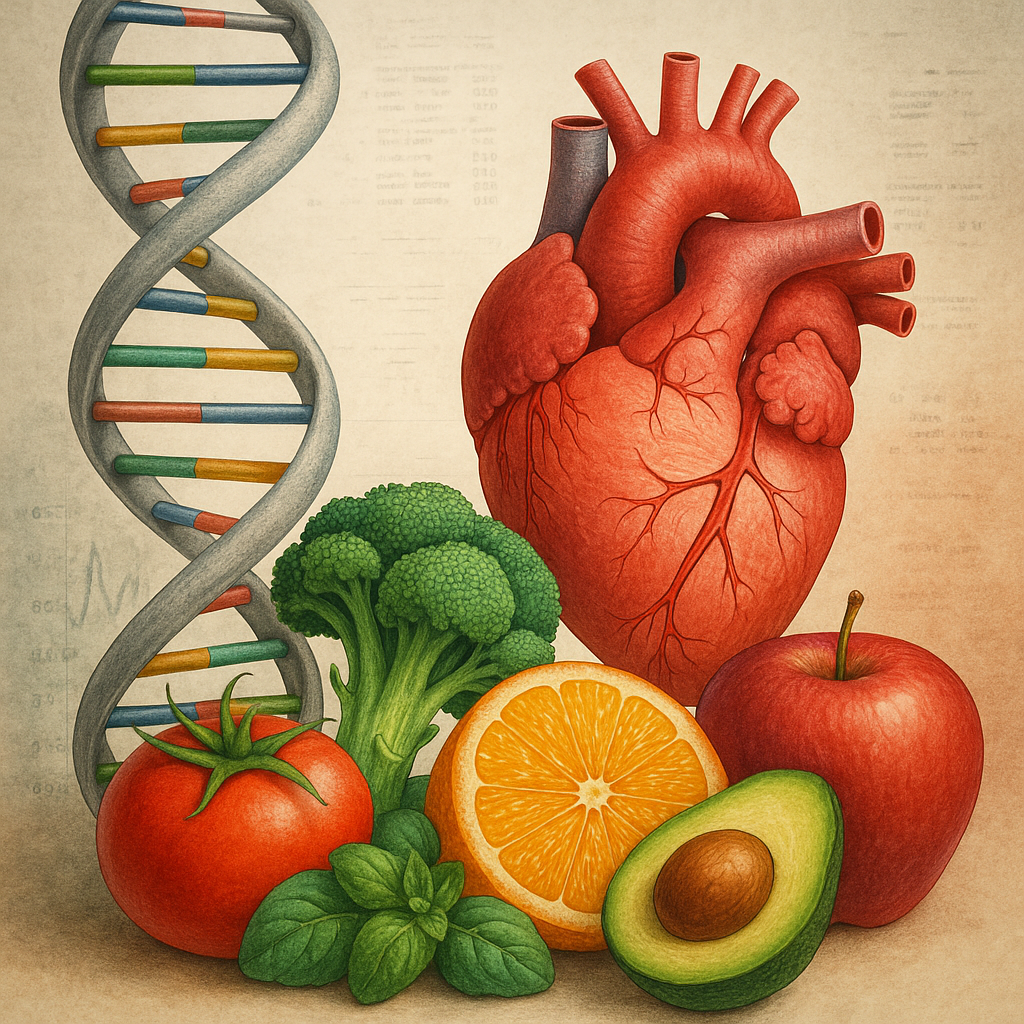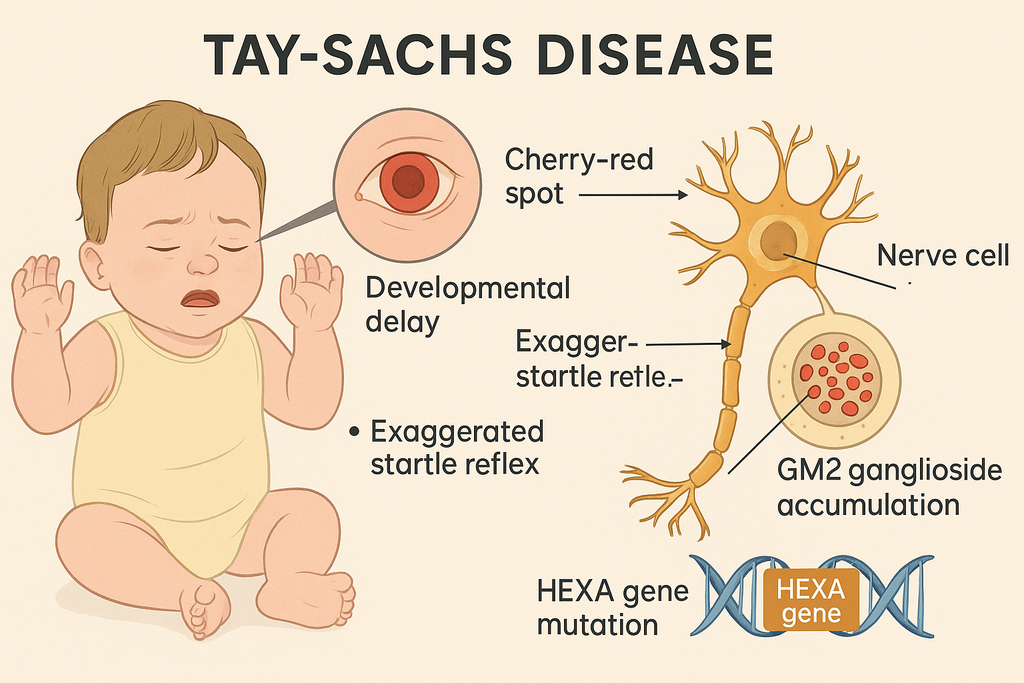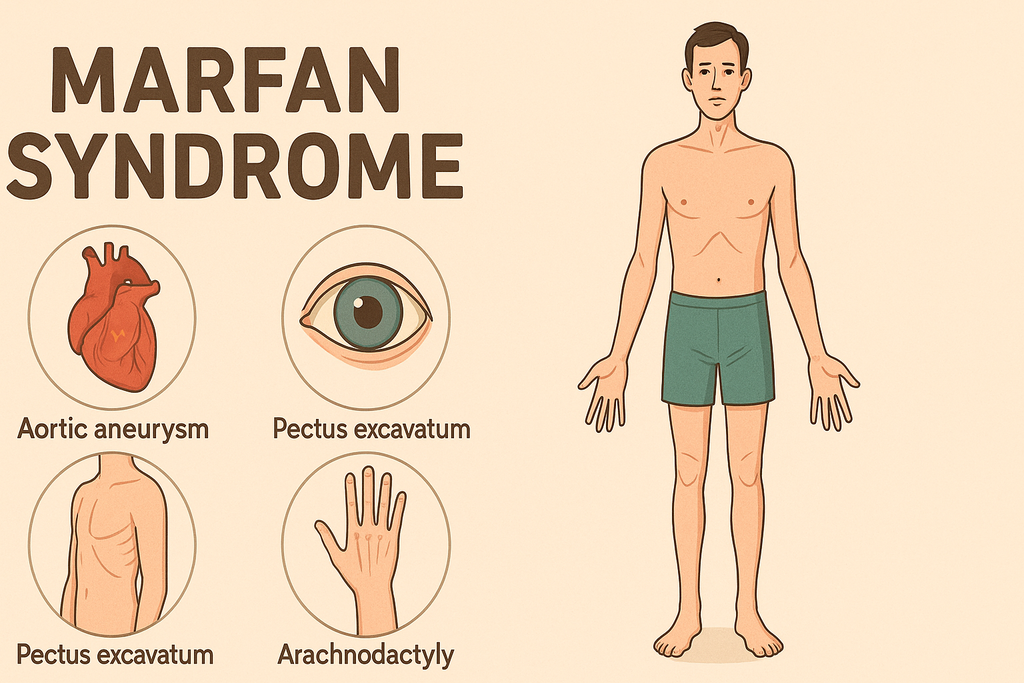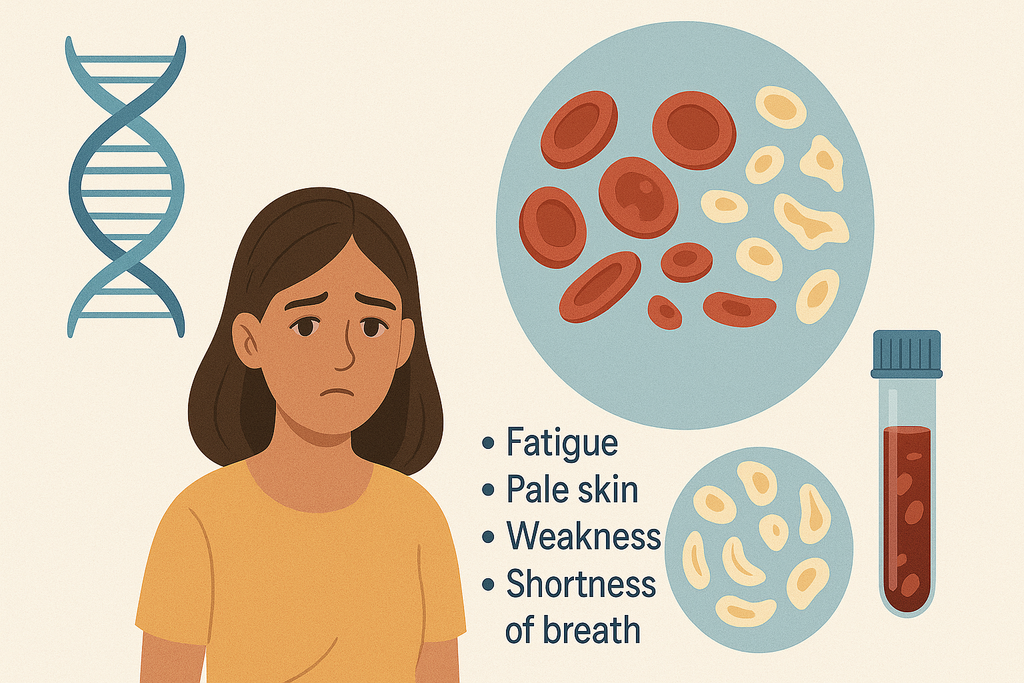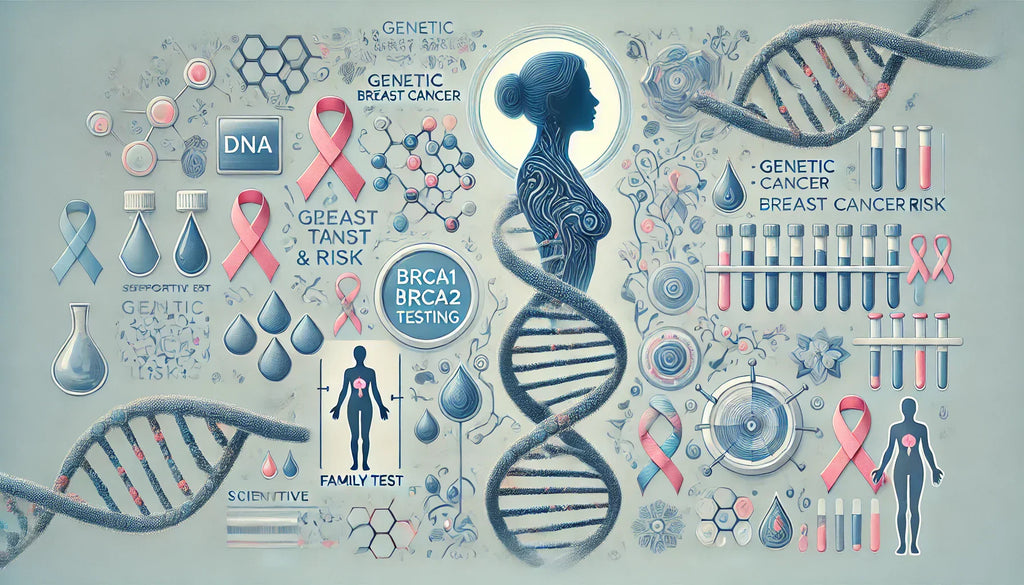News — genetic testing
Nutrigenomics and DNA: Personalizing Cardiovascular Risk Reduction
APOE gene blood pressure genes CardioGene Complete cardiovascular health cholesterol and genetics DNA testing epigenetics gene-nutrient interaction genetic heart risk genetic testing heart disease prevention heart health DNA methylated folate MTHFR nutrigenomic testing nutrigenomics omega-3 metabolism personalized nutrition personalized supplements precision nutrition
Imagine being able to tailor your diet and lifestyle based on your unique genetic makeup. No more guesswork, no more one-size-fits-all solutions—just precise, science-backed recommendations that can improve your heart health and overall wellness. That’s the promise of nutrigenomics, a cutting-edge field that explores how your genes interact with nutrients to influence your health. Specifically, it holds tremendous potential in reducing cardiovascular risk by targeting the root of the problem—your DNA.
As heart disease remains the leading cause of death globally, the importance of individualized prevention strategies cannot be overstated. Nutrigenomics offers a revolutionary approach to cardiovascular care by uncovering how specific genetic variations affect cholesterol levels, blood pressure, inflammation, and even how you metabolize certain fats. With this knowledge, you can take proactive steps to mitigate risk through personalized nutrition and targeted supplementation. In this article, we’ll explore how nutrigenomics works, what the science says, and how it can be practically applied to keep your heart in top shape.
What is Tay-Sachs Disease? Genetic Disorder Explained
autosomal recessive carrier screening cherry red spot enzyme deficiency enzyme replacement gene therapy genetic disorders genetic testing GM2 gangliosidosis HEXA gene infantile Tay-Sachs inherited disease late-onset Tay-Sachs lysosomal storage disease neurological disorder rare genetic disease Tay-Sachs Tay-Sachs diagnosis Tay-Sachs disease Tay-Sachs symptoms
Genetic disorders can be complex and emotionally overwhelming—especially when they strike in infancy. Tay-Sachs disease is one such rare yet devastating condition, marked by relentless neurological decline. Though uncommon, this disorder has taught us much about genetic inheritance, the importance of early screening, and the power of research to bring hope to affected families.
Understanding Tay-Sachs is about more than just memorizing medical facts; it’s about recognizing the human story behind a defective gene. In this article, we’ll walk you through what Tay-Sachs disease is, how it develops, the role of genetics, and what current science offers in terms of diagnosis, care, and future breakthroughs.
Marfan Syndrome: Unraveling the Secrets of Your Connective Tissue
aortic aneurysm aortic dissection cardiovascular health connective tissue disorder eye complications FBN1 gene fibrillin-1 mutation genetic testing heart complications inherited disorder lens dislocation marfan awareness marfan diagnosis marfan gene marfan symptoms marfan syndrome marfan treatment scoliosis skeletal abnormalities tall stature
When we think about the human body, we often focus on organs, muscles, and bones—but beneath it all lies a lesser-known, yet vital network: connective tissue. This tissue holds everything together, providing strength, elasticity, and structure. But what happens when this intricate system is compromised by a genetic mutation? Enter Marfan syndrome—an inherited connective tissue disorder that affects multiple systems in the body, often in ways that aren’t immediately visible.
Marfan syndrome isn’t just about being tall and flexible. It can have serious implications for the heart, eyes, and skeleton, and early diagnosis is crucial for preventing life-threatening complications. In this article, we’ll explore the origins, signs, and treatments of Marfan syndrome and show how modern medicine is improving lives for those living with this condition.
Thalassemia Unveiled: A Deep Dive into This Inherited Blood Disorder
alpha thalassemia anemia beta thalassemia blood disorder blood transfusions carrier screening chelation therapy Cooley's anemia gene therapy genetic testing hemoglobin inherited blood disorder red blood cells thalassemia thalassemia diagnosis thalassemia major thalassemia minor thalassemia prevention thalassemia symptoms thalassemia treatment
Imagine having to live your life constantly fatigued, battling anemia, or undergoing regular blood transfusions—simply because of an inherited trait. That’s the reality for millions of people worldwide affected by thalassemia, a group of inherited blood disorders that interfere with the body’s ability to produce hemoglobin.
Often misunderstood or misdiagnosed, thalassemia can range from a silent carrier state to a life-threatening condition requiring lifelong medical intervention. In this article, we’ll uncover the genetic roots of thalassemia, explore its types and symptoms, and walk through modern diagnostic and treatment strategies that offer hope to those living with the disorder.
Genetic Risk Factors for Breast Cancer: What You Need to Know and How to Get Tested
BRCA1 BRCA2 breast cancer breast cancer genes cancer screening family history genetic counseling genetic mutations genetic risk factors genetic testing hereditary cancer molecular diagnostics preventive care risk assessment women's health
Understanding your genetic risk for breast cancer is a critical step towards proactive health management. This guide explores the genetic risk factors that can influence breast cancer, explains the role of key genes like BRCA1 and BRCA2, and provides practical tips on how to get tested.
Whether you’re new to this topic or looking for in-depth information, our supportive and research-backed insights aim to empower you in making informed decisions about your health.

